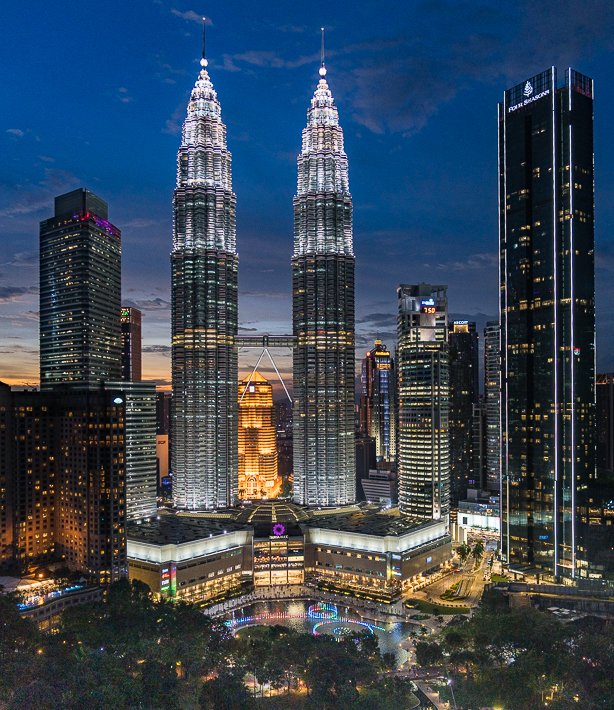
When we first thought of going to Kuala Lumpur, we expected to get some nice skyline photographs. After searching for suitable sites though, we concluded that there is no good location to shoot the skyline from. When studying alternatives, we kept coming up with the Twin Towers as being the true iconic view in the city.
There is a park at the base of the towers (seen at the bottom of the image above), but the perspective from there was poor. We then discovered the Traders Hotel Sky Bar, on the 33rd floor, which is directly across from the towers, and presents an unobstructed view. We headed there a bit before sundown, set up our tripods, and watched the scene unfold as we drank margaritas and ate some tapas. About half an hour after sunset, the sky turns a deep blue color that shows beautifully in photographs, as seen above.
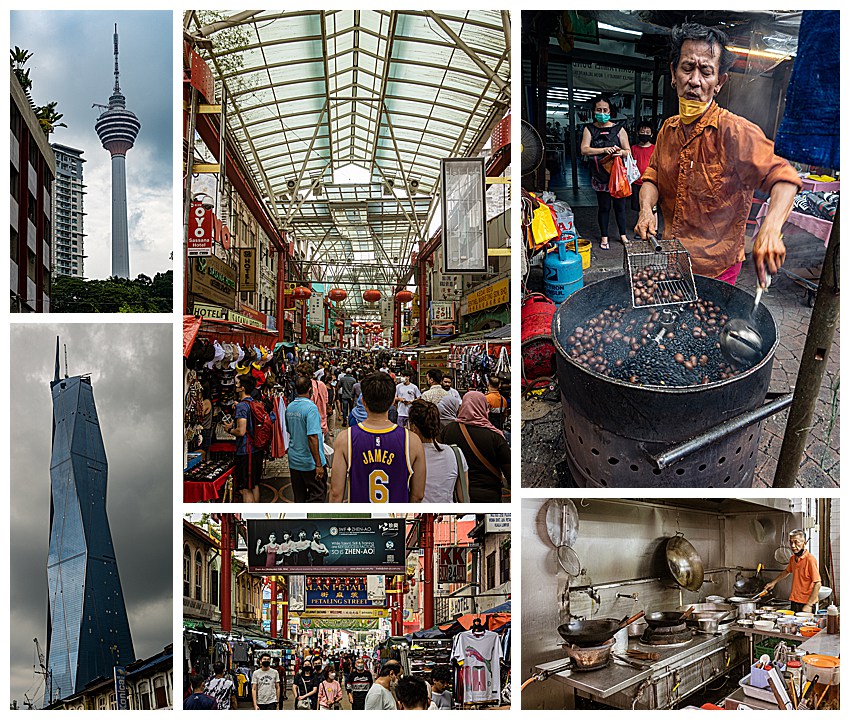
Kuala Lumpur is the capital of Malaysia. It is an exotic city with lots of shopping, fabulous world-class restaurants, and a mix of ethnic and religious people all living and working together. It is the fastest growing metropolitan area of the country and the 6th most visited city in the world. We spent one afternoon wandering through Chinatown (right two columns), from which can be seen some of the uniquely designed skyscrapers (first column) that the city is famous for.
We often enjoy wandering through street markets, which are called “Hawker Markets” in Malaysia — likely because there are people hawking the food and trying to get customers to eat there. The short 80 second video above shows a few of the interesting street food scenes we saw.
It opens with an ice cream vendor, reminiscent of similar vendors we have seen in Turkey. These guys (always men) put on quite a show for your ice cream cone! Then we see some chestnuts being roasted, and finally a unique way to make potato chips that we found fascinating.

Kuala Lumpur is also known for its diversity in cultural and ethnicity. Traditional art is centered around crafts. The Central Market was a pleasant surprise, mostly selling more upscale trinkets than seen in other markets in town (all except center and center-right).
We were particularly excited to see a photographic exhibition, Masters of Disguise, by Chien Lee Wildlife Photography (center and center-right). His wildlife photographs are absolutely stunning, with photos from Borneo, Ecuador, Indonesia, Madagascar and New Guinea. This photo show concentrates on animals that are masters of camouflage, or “disguise” as the show describes it. The photos were exquisitely displayed, and often we had to hunt to find the animal, though it was the dominant part of the image, so well had it camouflaged itself into its environment. Chien started out as an environmental educator in California before relocating to Borneo, where he now focuses on conservation.
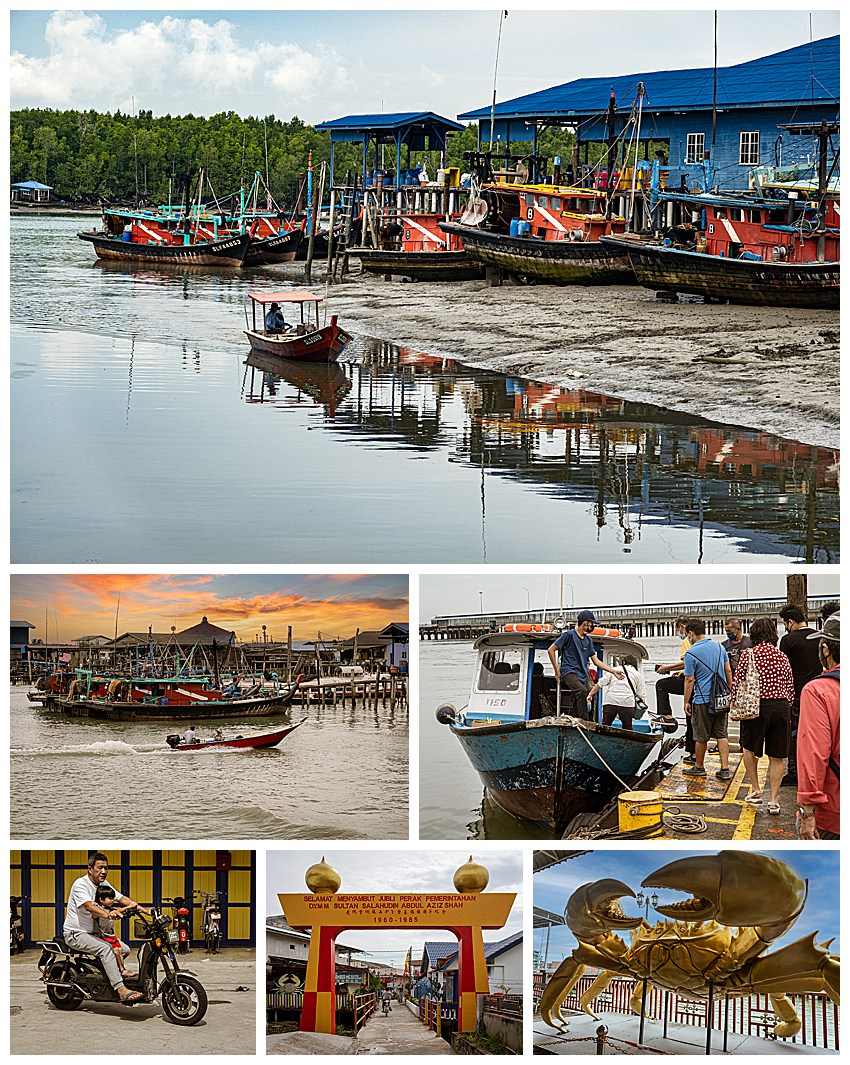
A fun side trip was to the somewhat touristy Pulau Ketam, aka Crab Island, off the coast of Selangor, Malaysia. We were eating dinner in a street cafe in Kuala Lumpur one night, and noticed a fascinating photo of a fishing village on the wall. When I asked the waitress where the photo was taken, she told us of this island, and we decided to take a short trip to check it out.
We hired a driver and car (we will NOT drive in Malaysia!!) to take us there for a day. We reached a small port city (lower right), and then took a small high speed ferry (center right) for 30 minutes to the island. Our first impression of the island was… mud… We had not considered how much the tide affects this area. We had arrived at low tide, and most of the fishing boats were grounded (top). When we left a few hours later, the tide was coming in, and the boats were again floating (center left).
The island itself was composed of small rectangular plots with homes on piles, and a maze of concrete paths connecting them (lower-center). There are no gasoline vehicles allowed on the island, but there were numerous electric motorcycles (lower-left).
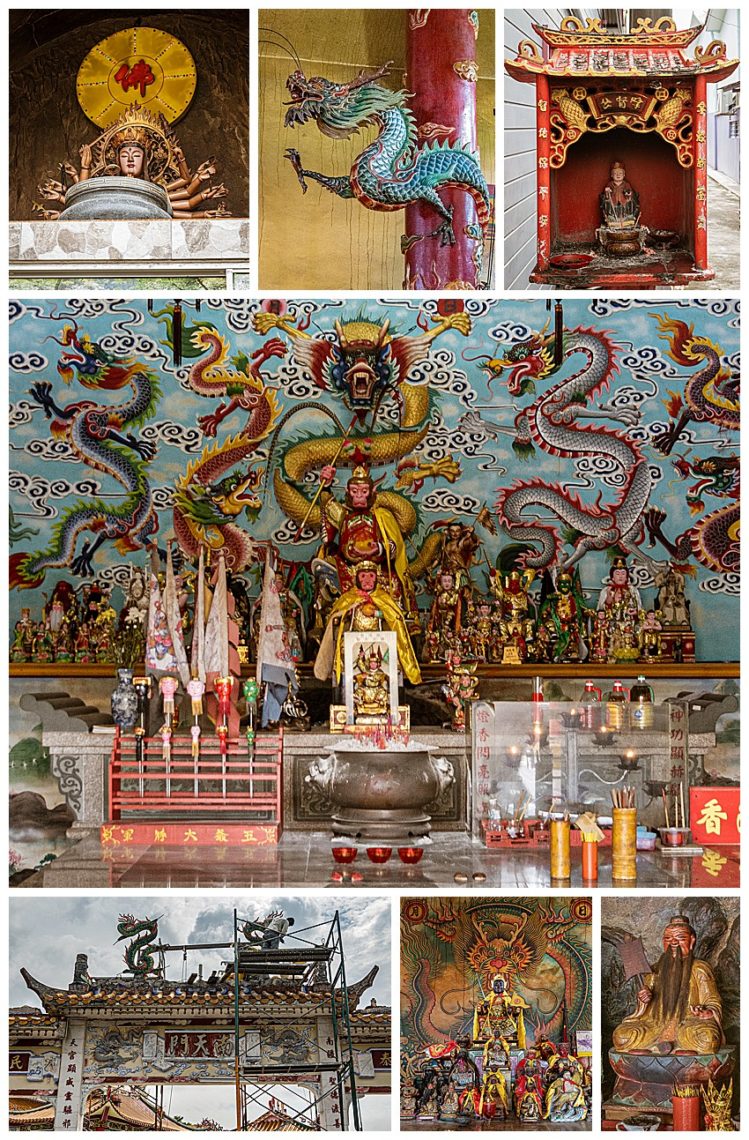
Besides the homes for the population of 8000, there were religious structures everywhere you turned. Christian churches, Islamic mosques, Hindu temples, Taoist temples, Buddhist temples, and others were all side-by-side throughout the island. Almost all were in good condition. The few shabbier ones were clearly in the process of renovation (bottom-left).
Being named “Crab Island,” we knew that we had to eat crab there. We stopped at a small outdoor restaurant named “Remember Me” and had some delicious chili crab.
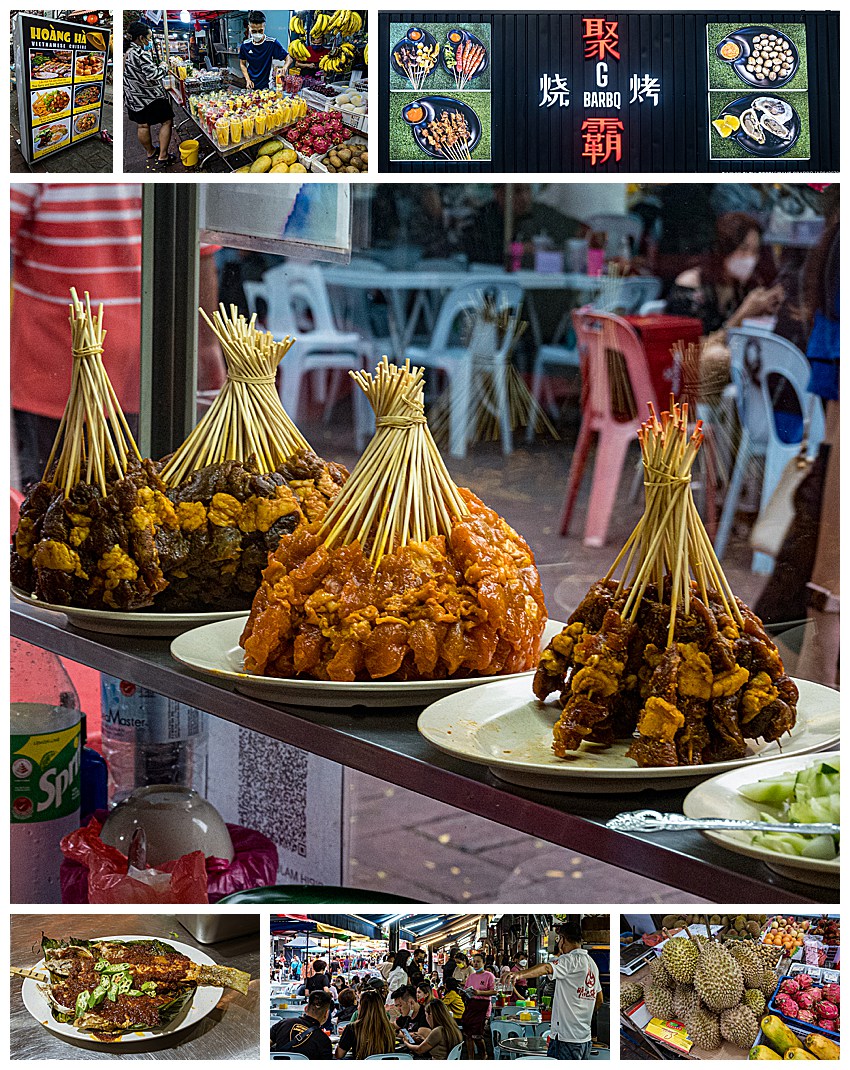
There are more than than 10 night markets in Kuala Lumpur, so you could visit a different one for each night of the week. One evening, we walked to one closest to our hotel, the Jalan Alor Street Food Night Market.
The first thing we smelled was durian (lower-right). It is so famously smelly that it is banned on all airplanes, and some hotels. You cannot walk within a block of a durian vendor without smelling it. We had always considered it something to avoid, but Murni (the owner of the hotel we stayed at in Ubud, Bali, Indonesia) told us how much she loved it as a child, and how it is her favorite fruit. On this street market, you could buy it in the form of pastries, ice cream, cut up as fresh fruit, or juice (called “soursap”). We took the plunge and tried it… Not bad…
